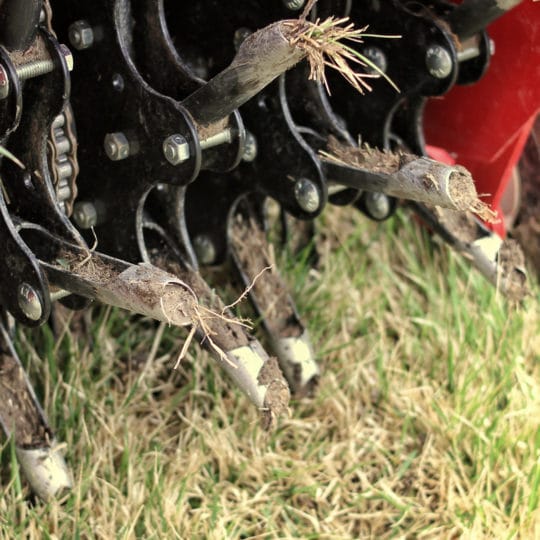How to Aerate Your Lawn
And Why You Should
Posted
September 12, 2019

Just like us, our grass needs air to breathe. Aerating our lawn helps with that while also allowing other nutrients to reach the roots. Learn more about how to aerate your lawn and why it’s so important.
What is Aeration
In short, aeration creates tiny holes across your lawn to allow air, water, and nutrients to penetrate the grass roots. As a result, roots grow stronger and deeper for a healthier lawn.
Why tiny holes? Overtime soil becomes compacted and suffocates roots. Too much thatch or debris across your lawn won’t allow the right nutrients to reach the roots, starving them out. Tiny holes help alleviate compaction, providing the right amount of access with the least amount of damage.
Which Lawns Need Aerating
Not all lawns will need the same amount of aeration. The following factors determine how much a lawn is in need of maintenance:
- Age. A new lawn isn’t always a healthy lawn. In fact, topsoil in newly constructed lawns has most likely been compacted by heavy construction vehicles.
- Traffic. Between people, pets, and time, a lot can happen to your yard. If it’s considered the neighborhood playground and gets a lot of foot or paw traffic, your soil is getting compacted pretty quickly.
- Texture. Does your lawn tend to dry out quickly and have a spongy feel? This is an indication of too much thatch.
How to Aerate Your Lawn
The best time for aeration is during the growing season—early spring or fall for cool-season grass, and late spring for warm-season grass. During this time it’s easier for grass to heal.
Pick the right tool—preferably one that removes soil cores, like a plug aerator. There’s also spike aerators which simply poke holes in the ground, but this can also lead to additional compaction around the holes. These tools can be rented from lawn and garden stores or home improvement centers.
Once it’s the right time and you have the right tools, here are some other tips on how to properly aerate your lawn:
- Make sure the soil is moist enough before you begin. Aerate the day after it rains or watering your lawn.
- Make multiple passes with the tool over the most compacted areas. Save time and energy by leaving unaffected areas alone.
- Let the removed soil plugs dry and then run them over with a lawnmower to break them up.
- Continue maintaining your yard with proper fertilizing, mowing, and watering techniques to get it in top shape.
If you’re still not sure your lawn needs aeration, contact Cardinal Lawns for a consultation. Your lawn will breathe a sigh of relief when you do.
Special Offer for New Customers
Two Free Lawn Care Treatments
Hurry! Offer Expires April 30, 2025